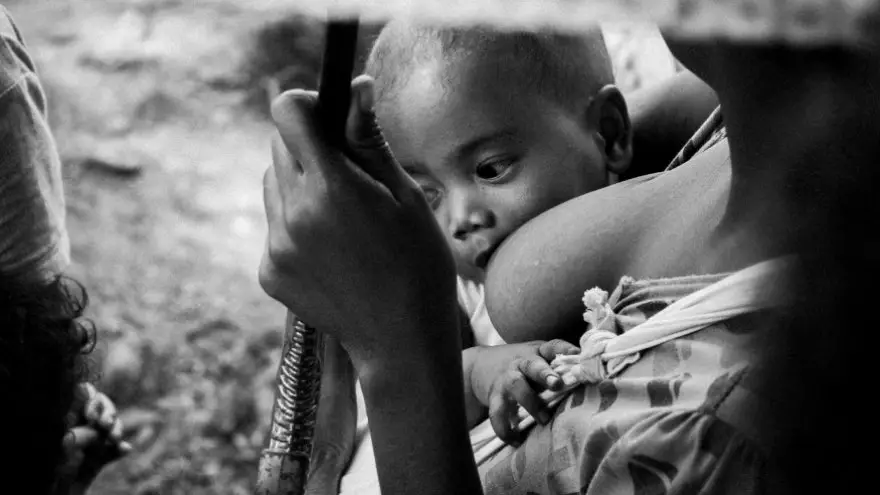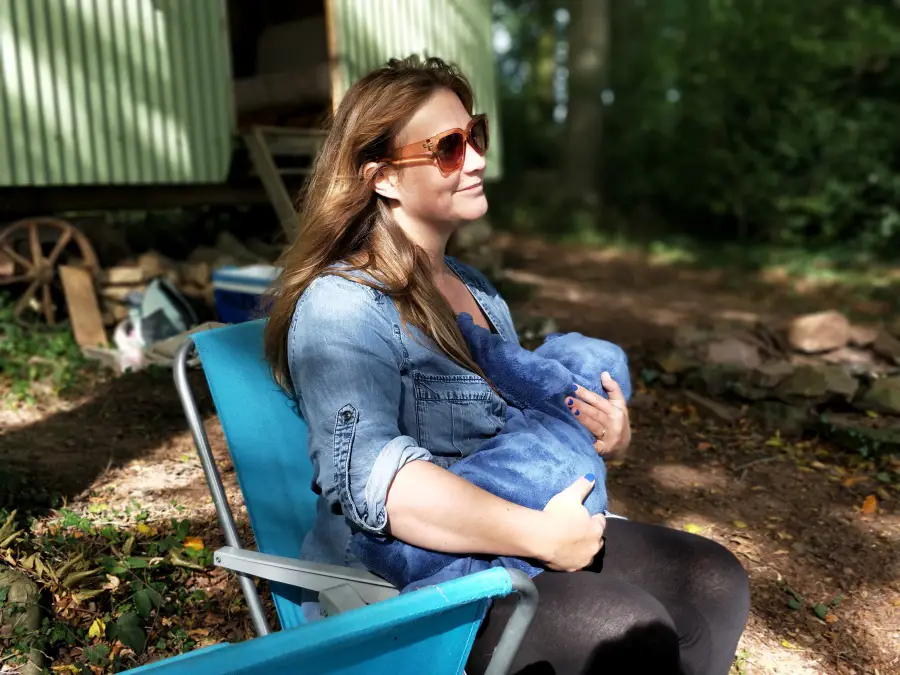Reheating Breastmilk: Yes or No

It’s 3 am, you’re sick with some kind of upper respiratory crud and you don’t want to pass it to the baby. Your partner is taking over feeds so you can get some much-needed rest but all the milk you dutifully pumped just for moments like these are frozen in little bags in the kitchen. Now what?
Maybe you just went back to work postpartum, and have been pumping at work to help keep up your milk supply and also relieve the discomfort as you find your groove this new routine of being away from your baby for a few hours, you pumped, put the bags in the cooler you keep by your desk and when you get home your nanny is ready to take on one more meal before you are back in business. What does she need to do to use the milk you brought home?
Breast Milk is the hands down best food you can give your baby. It is the perfect mix of vitamins, minerals, fats, and antibodies that is custom made just for your child. While our ancestors direct nursed from the tap, so to speak, many modern moms need to pump at times to keep the nutrition going for their baby.
Pumping your breast milk can be tough at first, learning to relax enough for let down, fussing with the bags or bottles, and then finding storage for your bounty can be overwhelming. Knowing a few things at the beginning can help overcome the hurdle and successfully, pump, store, and use your breast milk on your schedule.
Typically freshly pumped milk can be stored at room temperature for up to 4-5 hours, so if you’re pumping before bed and your partner is going to administer those middle of the night feedings this might be an option for you. However, if you’re pumping ahead of a long day or even a weekend trip you’ll want to look into better storage options.
 Breast milk once pumped can be frozen for up to 6 months in a very cold freezer, or stored in the fridge for up to 5 days. Once you freeze your breast milk you want to thaw it safely, using a bowl of warm water for 20 minutes or thawing it over a few hours in the fridge. Make sure not to just pop the frozen bag on the counter to thaw it though, slow defrosting at room temperature is an invitation for bacteria that can harm your baby to grow in the milk.
Breast milk once pumped can be frozen for up to 6 months in a very cold freezer, or stored in the fridge for up to 5 days. Once you freeze your breast milk you want to thaw it safely, using a bowl of warm water for 20 minutes or thawing it over a few hours in the fridge. Make sure not to just pop the frozen bag on the counter to thaw it though, slow defrosting at room temperature is an invitation for bacteria that can harm your baby to grow in the milk.
Assuming you planned ahead and thawed in the fridge, which is the best idea, you may be looking for information on when, how, and if to reheat your milk so that your baby can have a great feeding experience.
Know the risks
Make sure you are heating your milk carefully, you don’t want it to get too hot as that will affect the nutrients and can actually burn your baby if you aren’t careful. Using the microwave is a no-go. Microwaves not only can overheat the milk but they can also cause hot spots and if not mixed well after can pose a hazard for your baby.
Don’t refreeze your milk. Once it has been thawed it’s use it or lose it, refreezing milk can affect it negatively so only thaw your milk as needed. Keeping a log of when your baby eats and how much can help you figure out how much to thaw at a time.
Once you started, you have to finish. If your baby doesn’t finish a bottle you can store it at room temperature for up to two hours in case they want to finish it later, but going past that point is dangerous, as it makes the milk a breeding ground for all kinds of bacteria and other germs that can cause illness in your baby. Absolutely do not reheat milk after your baby has started on a bottle if that bottle has been stored. Heating up the milk won’t kill certain types of bacteria and can even make them more virulent.
Doing it right
There are many ways to reheat your breast milk safely, while the microwave isn’t an option, don’t be afraid to just set your bottle in a bowl of warmed water and swirl it to mix the milk in the bottle around so that you are heating it evenly.
Commercial bottle warmers are also an option. They have specific temperature tolerances to make sure the bottle is not being overheated and many are on timers so you can go about other business and just listen for the bell to tell you when the milk is ready.
Always test a bit of the milk on your forearm to make sure that it’s not too hot for baby. If it is let it sit for a while and try again, keeping in mind the 2-hour window. Adding cold water to your breast milk is a bad idea as it will water down the nutrition and can make it hard to know how much milk your baby actually got.
 The ideal temperature for breast milk is about the same as body temperature so when you test on your forearm it shouldn’t feel warm or hot. If this old way of testing doesn’t seem exact enough for you, you can buy a baby bottle temperature gauge that will test your milk for you and give you a digital readout of the exact temperature.
The ideal temperature for breast milk is about the same as body temperature so when you test on your forearm it shouldn’t feel warm or hot. If this old way of testing doesn’t seem exact enough for you, you can buy a baby bottle temperature gauge that will test your milk for you and give you a digital readout of the exact temperature.
Make sure not to taste the milk yourself or to stick your finger in the bottle, this introduces germs that need not be there. Keeping your milk from being contaminated isn’t hard, but it is an ongoing challenge to remember the do’s and don’ts.
Whether you choose to go old school with a bowl of warm water and a forearm test or high tech with a bottle warmer, bottle temperature tester, and a whole host of other handy gadgets, always remember that your milk doesn’t need much nudging along, it was custom made for your baby and if you are careful with it this important resource can be amazing for your child’s health and well being.







